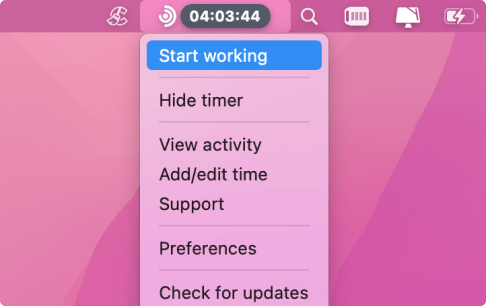
Any self-respecting business has rules in place for employees to follow, but people aren’t robots, and a failure to comply to certain regulations is not always the result of malicious intent. If you’re a manager struggling with an employee not following company policy, you’re not alone – but the good news is that there are ways to identify and mitigate the situation long before you involve HR.
In this article, we’ll go over practical steps to identify non-compliance among employees, understand its causes, and how to address the issue effectively.
Key Takeaways
Clear communication, accessible documentation, clear-cut procedures, and regular training are essential to prevent employee non-compliance with company policies.
Addressing the issue directly through private conversations and constructive feedback fosters a culture of trust and understanding.
Implementing appropriate disciplinary measures and monitoring employee activity using tools like Traqq are crucial for maintaining adherence to organizational policies.
Common Reasons Why Employees Don’t Follow Company Policies

Employees not following policies set by the organization is a surprisingly common issue, and often stems from a lack of awareness. More often than not, employees may simply be unaware that certain rules even exist, which is why clear communication and accessible documentation are key if you want your employees to follow them.
Many organizations often implement overly complex and ambiguous policies, so it’s a good idea to first review your organization’s documentation before dishing out consequences for noncompliance. When policies are not clear-cut, employees might fail to understand and adhere to them, so they may fail to comply without even being aware that they’re doing anything wrong.
On the other hand, when an employee is fully aware of the policies that are in place, a perceived unfairness or overly strict policies can sometimes lead to violations that are completely intentional. Employees may view certain procedures as unjust or even redundant, prompting them to disregard the rules on purpose.
It is particularly problematic when policies become outdated and no longer align with modern practices, causing frustration and, subsequently, intentional violation. Additionally, some staff members might feel entitled to bypass certain rules if they disagree with them, which could stem from a deeper disagreement with the organization’s procedures and vision.
Understanding these common reasons can help management address the root causes of non-compliance. Clear, fair, and up-to-date company rules minimize non-compliance, foster a cooperative work environment, and improve morale among employees.
Identifying Policy Non-Compliance

The first step to solving any problem is to identify it. Maintaining an efficient and legally compliant workplace is imperative to the health of the business, and tools like Traqq can help tremendously with this. For example, with Traqq, you can generate automated reports that analyze team performance in real time, allowing managers to detect issues like unplanned absence and burnout on the fly. These analytics help identify trends in employee productivity, making it easier to determine the specific issue that is causing an employee to violate certain policies.
Insubordination can often be detected through specific warning signs, such as repeated failure to follow established protocols, such as no call no shows, sleeping on the job, or using social media on company time. Attendance tracking and application usage monitoring features in Traqq can also help ensure that employees follow these guidelines.
Proactively addressing even minor (but intentional) acts of noncooperation prevents the escalation of issues in the long run and, in turn, promotes a culture of fruitful collaboration. In conjunction with productivity management tools like Traqq, regular performance reviews are another effective mechanism for monitoring compliance metrics consistently.
Addressing the Issue Directly
As a manager, running into a situation when an employee is using doomscrolling on their phone once in a while may not seem like a big deal. However, if this is against company policy, it is important to deal with the issue directly to ensure that all employees are on the same page. Ignoring the willful defiance of company regulations can lead to larger issues down the line.
Start by discussing the issue privately with the employee to understand the root cause of their behavior. Clarifying the reasoning behind such policies and offering constructive feedback are critical steps in addressing insubordination.
Conducting a Private Conversation
A private conversation builds trust and helps the employee feel valued and heard. During this discussion, do your best to understand the employee’s concerns and establish how you can help deal with them as an employer. This approach also helps in uncovering underlying issues that might have contributed to their behavior, providing valuable insights for management that could potentially be applied to other employees. Understanding their reasoning and the underlying concerns is the best path toward effective resolution and will help you become a better manager if you empathize with their issues.
Reiterating Company Policies
Reviewing company policies during one-on-one conversations is the best first step to clarify any misunderstandings that the person might have. Explain how their actions impact other team members and the potential consequences if the behavior continues. Don’t assume that the employee is intentionally violating policies and set expectations for their behavior going forward.
Explaining the reasoning behind policies and their benefits fosters employee buy-in. This approach creates an environment where employees feel comfortable discussing their concerns rather than resorting to rule-breaking.
Providing Feedback to a Team Member
Feedback is crucial for encouraging compliance. Clearly outline expectations to guide the employee. Establishing clear expectations and providing regular feedback helps in effective monitoring of employee compliance. A verbal warning can serve as an initial step, communicating the expected behavior and the potential consequences if they continue their insubordinate behavior. If necessary, a written warning should detail specific policy violations and potential disciplinary actions.
Implementing Disciplinary Measures

Implementing behavior intervention strategies is a necessary step when trying to correct noncompliant behavior. Ignoring policy compliance can expose the company to significant risks, including liability, financial losses, and security breaches. It is essential to keep records of all conversations and actions taken when implementing intervention procedures in order conform to all laws and regulations, and to maintain transparency in the process.
Verbal Warning
When it is clear that an employee understands the rules set by a manager, a verbal warning serves as an next step to correct employee misconduct before escalating to written warnings. This can be delivered through direct conversations, either face-to-face or via phone calls.
Verbal warnings are the first measure in the disciplinary process aimed at addressing recent problems related to an employee’s behavior, competence, or performance. They allow supervisors to deliver crucial constructive feedback to employees clearly and directly.
Written Warning
A written warning should clearly outline the specific behaviors that an employee violates company policies and delineate the consequences of continued non-compliance, including any previous warnings, with prior notice. If the behavior continues after a written warning and multiple opportunities to correct behavior, further disciplinary action may need be taken.
Further Disciplinary Action
When an employee fails to respond positively to verbal and written warnings, the next steps are an escalation of disciplinary action, which include probation, suspension, and eventually, employment termination. Probationary periods allow employees a chance to demonstrate improvement under the close supervision of the HR department and the employee’s direct supervisor, while suspension and termination are the last resort measures that are applied when all other remedial actions fail.
It is crucial to document all interactions and steps taken regarding policy non-compliance and proper procedures to ensure transparency, adherence to employment laws, and fairness in the process.
Training and Support

Training and support are essential for ensuring employees understand and follow company policies effectively. Regular training keeps employees updated and helps to clarify expectations, reducing the risk of misunderstandings. Establishing a workplace culture that values rules fosters ownership among employees, leading to enhanced ethical behavior and policy adherence.
Regular Training Sessions
Training employees in company policies is a sure way to prevent issues before they arise. Regular training sessions keep employees informed about company policies and procedural changes. If the training is part of a remedial plan, offering clear expectations for improvement helps in outlining expectations of what actions are required to meet compliance standards in the future.
Offering Support
Providing resources such as an employee handbook ensures employees have access to necessary policy information. Making work instructions more visible helps improve understanding and compliance among employees. Access to necessary information and support is crucial for maintaining compliance.
Monitoring Compliance
Effective monitoring of compliance involves tracking employee activities. Using tools like Traqq, employers can monitor how employees utilize their work hours, enhancing overall productivity. Effective monitoring requires utilizing tools that can provide insights into employee productivity and adherence to company policies.
Using Traqq for Monitoring
Traqq offers non-intrusive employee monitoring, ensuring compliance and productivity tracking without invading privacy. Its time tracking capabilities monitor team members’ work hours, syncing it to a user’s profile every minute.
Traqq includes features like keyboard and mouse activity tracking to gauge productivity without compromising privacy (no keylogging or screenshots. It guarantees 100% security and data protection, ensuring that all employee data is handled responsibly.
Reporting and Analytics
Traqq is a powerful tool for reporting and analytics, providing insights into team performance and adherence to company policies. It offers detailed productivity statistics and accurate online timesheets to measure and analyze team performance. The ability to create groups in Traqq allows for the generation of flexible and customizable team productivity reports.
Creating a Culture of Compliance

A compliance culture is essential for ensuring adherence to rules and promoting integrity throughout an organization. Establishing a culture of compliance enhances organizational integrity and promotes ethical behavior among employees.
Leading by Example and Promoting Accountability
Management should embody the compliance standards they set to inspire employee adherence. Leaders who actively demonstrate compliance and ethical behavior inspire employees to adhere to the same standards. When leaders consistently adhere to company policies, it sets a standard for employees, reinforces the importance of policies, and promotes personal accountability.
From Not Following Policies to Loving Your Work
When a manager encounters insubordinate behavior, their ultimate goal shouldn’t be to punish, but to create a supportive workplace where everyone understands and values organizational guidelines. By approaching potential issues with empathy, clear communication, and structured support, organizations can transform potential conflicts into opportunities for growth and mutual understanding.
Remember that a thriving workplace is built on trust, respect, and shared understanding, not rigid enforcement. Make use of the productivity management tools available to you, empathize with your employees, and make sure that your policies apply to actually doing a good job. If you follow these guidelines, your employees will naturally want to comply with the rules and gain a sense of satisfaction from doing their job.
Frequently Asked Questions
What are some common reasons employees don’t follow company policies?
Employees often do not follow company policies due to lack of awareness, complexity, perceived unfairness, outdated guidelines, or deliberate non-compliance. Understanding these factors can help in developing more effective policies and procedures.
How can I identify policy non-compliance?
To identify policy non-compliance effectively, utilize tools such as Traqq, which offer automated reporting, attendance tracking, and activity monitoring. This can streamline the detection of any deviations from established policies.
What are the steps to address policy non-compliance directly?
To address policy non-compliance directly, conduct a private conversation to discuss the issue, reiterate the relevant company policies, and provide constructive feedback (with examples) to the person involved. This approach promotes understanding and encourages adherence to policies.
What are the different types of consequences for noncompliant behavior?
Conduct management procedures that result form insubordination typically encompass verbal warnings, written warnings, probation, suspension, and termination. It’s important to choose the appropriate level of discipline based on the severity of the behavior.
